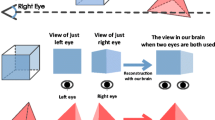Abstract
The availability of international standards based video codecs for inexpensive platforms is reducing the cost of desk-top video systems to a level which makes their wide deployment possible. The current systems, however, are tuned for processing a single video stream only and their use in multiple video applications, such as continuous presence video teleconferencing and digital picture-in-picture, is difficult and inefficient. In this paper, we discuss two systems for efficient generation and display of multi-resolution, multiple compressed video material. Based on simple additions to standard codecs, both systems are capable of generating multiple bit streams corresponding to different resolutions of a single video source and they can decode such streams from multiple sources and display the resulting video sequences simultaneously. Both systems provide multiple video functionality to standard codecs with almost no extra memory or processing power requirements. Also, they make it possible for the users to customize the placement and size of their video windows, just as text and graphics windows can be manipulated.
Similar content being viewed by others
References
G. Wallace, “The JPEG sill picture compression standard,” Communications of the ACM, Vol. 34, No. 4, pp. 30–44, April 1991.
D. Le Gall, “MPEG:A compression standard for multimedia applications,” Communications of the ACM, Vol. 34, No. 4, pp. 46– 58, April 1991.
“Generic coding of moving pictures and associated audio information: Video,” Recommendation ITU-T H.262, ISO/IEC 13818-2, Draft International Standard, Nov. 1994.
S.F. Chang and D.G. Messerschmitt, “A new approach to decoding and compositing motion-compensated DCT-based images,” IEEE ICASSP, Minneapolis, MN, April 1993.
T.C. Chen, S.M. Lei, and M.T. Sun, “Continuous presence video bridging based on H261 standard,” SPIE Proceedings, Visual Communications and Image Processing, Cambridge, MA, Nov. 1993.
R.D. Gaglianello and G.L. Cash, “Montage: Continuous presence teleconferencing utilizing compressed domain video bridging,” IEEE ICC95, Seattle, Washington, June 1995.
M. Carr et. al., “Video coder/decoder for audiovisual services at 56 10 1,536 kbits/sec.,” American National Standards Institute, T1 pp. 64–199, (draft), Oct. 1990.
“mpeg2play” Version 1.1.b, MPEG-2 Software Simulation Group, available with anonymous ftp from: ftp.netcom.com:/ pub/cf/cfog/mpeg2, July 1994.
LSI Logic Corporation, “JPEG chipset technical manual,” Document MD71-000101-99-B, 1992.
Microsoft Corporation, “Microsoft windows NT workstation: version 3.5 system guide,” Document Number 57733-0794, 1994.
Author information
Authors and Affiliations
Rights and permissions
About this article
Cite this article
Civanlar, M.R., Gaglianello, R.D. & Cash, G.L. Efficient Multi-Resolution Multi-Stream Video Systems with Standard Codecs. The Journal of VLSI Signal Processing-Systems for Signal, Image, and Video Technology 17, 269–279 (1997). https://doi.org/10.1023/A:1007919426090
Published:
Issue Date:
DOI: https://doi.org/10.1023/A:1007919426090




